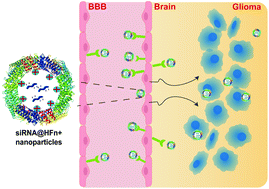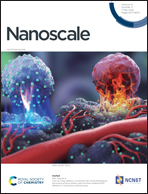Rational design of engineered H-ferritin nanoparticles with improved siRNA delivery efficacy across an in vitro model of the mouse BBB†
Abstract
Gene therapy holds tremendous potential for the treatment of incurable brain diseases including Alzheimer's disease (AD), stroke, glioma, and Parkinson's disease. The main challenge is the lack of effective gene delivery systems traversing the blood–brain barrier (BBB), due to the complex microvessels present in the brain which restrict substances from the circulating blood passing through. Recently, increasing efforts have been made to develop promising gene carriers for brain-related disease therapies. One such development is the self-assembled heavy chain ferritin (HFn) nanoparticles (NPs). HFn NPs have a unique hollow spherical structure that can encapsulate nucleic acid drugs (NADs) and specifically bind to cancer cells and BBB endothelial cells (BBB ECs) via interactions with the transferrin receptor 1 (TfR1) overexpressed on their surfaces, which increases uptake through the BBB. However, the gene-loading capacity of HFn is restricted by its limited interior volume and negatively charged inner surface; therefore, these drawbacks have prompted the demand for strategies to remould the structure of HFn. In this work, we analyzed the three-dimensional (3D) structure of HFn using Chimera software (v 1.14) and developed a class of internally cationic HFn variants (HFn+ NPs) through arginine mutation on the lumenal surface of HFn. These HFn+ NPs presented powerful electrostatic forces in their cavities, and exhibited higher gene encapsulation efficacy than naive HFn. The top-performing candidate, HFn2, effectively delivered siRNA to glioma cells after traversing the BBB and achieved the highest silencing efficacy among HFn+ NPs. Overall, our findings demonstrate that HFn+ NPs obtained by this genetic engineering method provide critical insights into the future development of nucleic acid delivery carriers with BBB-crossing ability.



 Please wait while we load your content...
Please wait while we load your content...